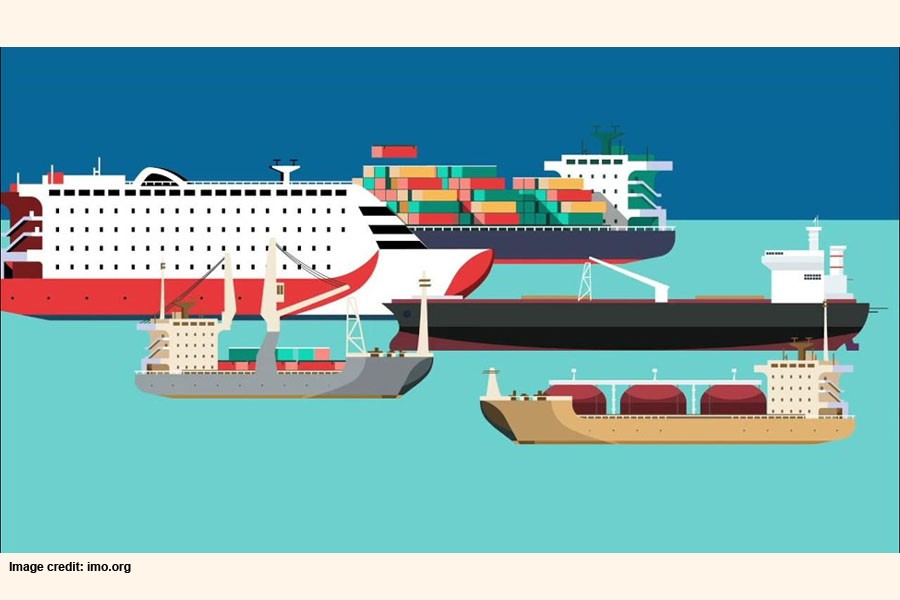 Despite the occasional bleep, the VLCC market remains in deep trouble for the weeks to come, with oversupply evident in key routes and regions. In its latest weekly report, shipbroker Charles R. Weber talked about “observed strengthening rates through much of the week as part of a delayed reaction to last week’s strong activity and narrowed Middle East availability surplus This trend kept with the trend of delayed reflection of fundamentals changes in sentiment. Indeed, demand this week declined 22% w/w to 32 fixtures while a long list of previously “hidden” positions suddenly appeared as available through the first decade of the September Middle East program. Whereas a week ago the first decade of the September program appeared poised to conclude with just nine surplus units, that number has now jumped to 17 units”, said the shipbroker.
Despite the occasional bleep, the VLCC market remains in deep trouble for the weeks to come, with oversupply evident in key routes and regions. In its latest weekly report, shipbroker Charles R. Weber talked about “observed strengthening rates through much of the week as part of a delayed reaction to last week’s strong activity and narrowed Middle East availability surplus This trend kept with the trend of delayed reflection of fundamentals changes in sentiment. Indeed, demand this week declined 22% w/w to 32 fixtures while a long list of previously “hidden” positions suddenly appeared as available through the first decade of the September Middle East program. Whereas a week ago the first decade of the September program appeared poised to conclude with just nine surplus units, that number has now jumped to 17 units”, said the shipbroker.
According to CR Weber, “this represents the largest surplus observed since the first decade of the August program and compares with a surplus holding at 14 units during August’s final two decades. Although still comparatively low against the 1H18 average of 27 surplus units, it proved too large to justify the extent of rate gains observed this week and after peaking during the first half of the week at YTD highs on some routes, they have since eased slightly. The rise in availability correlates partly to a rise in Middle East crude supply in June. With greater cargoes being sourced from the Middle East for voyages to Asia, interest from Asian buyers in Atlantic basin crude eased, leading to shorter ton‐mile generation. Although the rise in Middle East supply was initially positive, by quickly absorbing more surplus units, we have maintained that the longer‐term impact would be negative. Adding to woes, before the June commencement of stronger Middle East supply, fixture demand for US crude exports surged in May and temporarily prompted some speculative ballasts from the Middle East. Those units, which loaded during the final week of May and during June, are also now appearing on Middle East positions”.
Meanwhile, “on a positive note, VLCC demand on both sides of the Atlantic basin strengthened this week. The West Africa market observed 10 fixtures, representing a one‐month high and a 67% w/w gain while the Atlantic Americas observed 7 fixtures, also a one‐ month high and more than double last week’s tally. The fresh improvement of demand here should help to improve trade fundamentals going forward. Meanwhile, more generally, global crude destocking in recent months is likely to see stronger crude purchasing materialize in the coming weeks and months as refiners, who are operating at extremely strong rates, seek replenishments. After this week’s late easing, stronger rate losses may elude charterers during the upcoming week. After the UK’s bank holiday Monday, a return of participants to trading on Tuesday could be accompanied by an influx of second‐decade September cargoes sufficient to keep sentiment from weakening, if temporarily”, said CR Weber.
“Rates in the West Africa Suezmax market traded within a narrow band this week, observing minor losses early on that were subsequently pared by the close of the week to conclude unchanged. The WAFR‐UKC route concludes at ws63.75. Elsewhere, stronger VLCC rates have lent minor support to Suezmaxes in the Middle East market, where the AG‐USG route (excluding Basrah heavy crane requirements) were up 2.5 points to ws30. In the Americas, surging Aframax rates and strengthening demand for US crude exports supported stronger Suezmax rates. Demand to service crude exports from the USG are on course for a 37% m/m gain. The USG‐UKC route added 4.5 points to conclude at ws60 while the USG‐SPORE route jumped $150k to $2.7m lump sum. The upside did not extend to intraregional voyages; the CBS‐USG route was unchanged at ws72.5 as Suezmaxes remained uncompetitive to their smaller counterpart on the route on a $/mt basis, even after this week’s gains for the smaller class are accounted for”, the shipbroker noted.
Finally, “the Caribbean Aframax market observed strong gains this week as fundamentals tightened on strong MTD US crude export fixture activity (see graph below) and a rebound in intraregional demand this week. With another week to go, Aframax demand for US crude exports during August already matches the prior monthly record high set in October ’17 and thus is likely to set a fresh record. Meanwhile, some units previously exited the region speculatively amid an earlier TCE disparity between the Americas and Europe. Rates on the CBS‐USG route jumped 47.5 points to ws150 on this basis, placing TCEs on the route up 226% w/w to ~$21,859/day. Owners are likely to remain bullish through at least the start of the upcoming week and, failing a sharp decline in demand, further rate gains are likely to materialize. A surge in demand ahead of the Labor Day weekend could well accelerate and extend the trend. Further forward, a fresh recent decline in rates in some European markets could influence rates in the Americas down as tonnage reorients to the regional earnings disparities – keeping in the way the “seesaw” affect has been working between the two regions for the past several weeks, “CR Weber concluded.
Nikos Roussanoglou, Hellenic Shipping News Worldwide





















